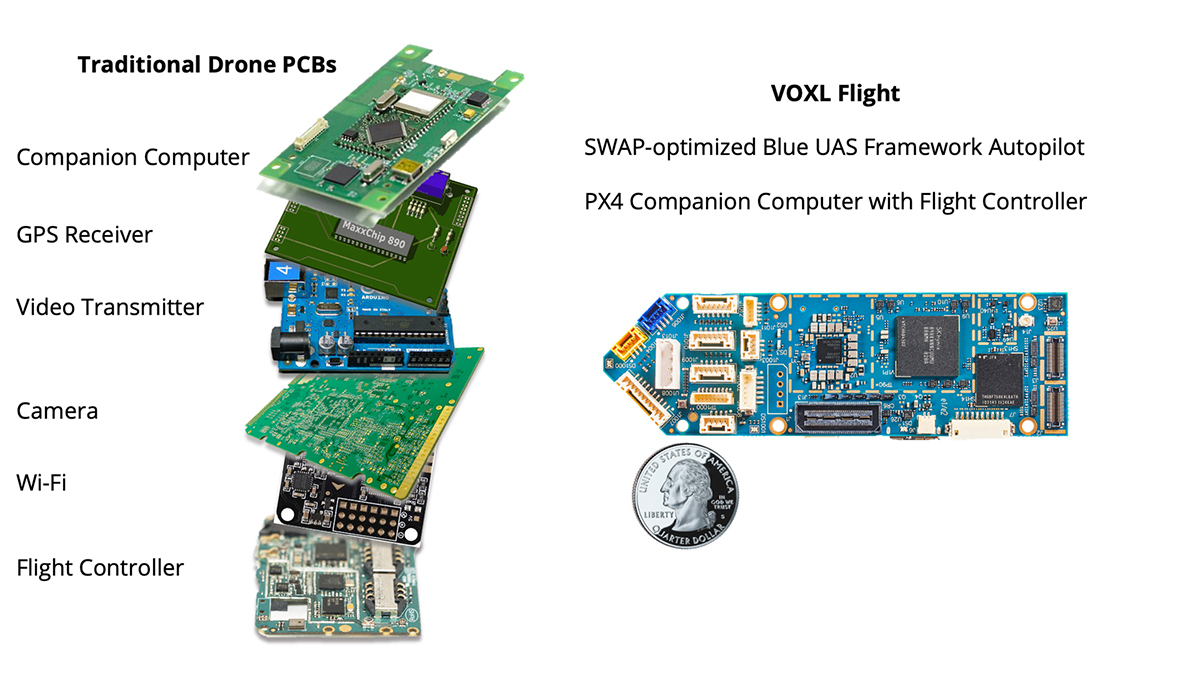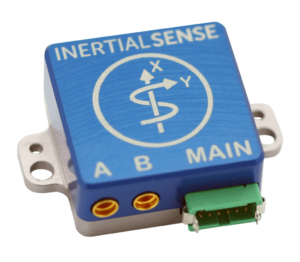Reputable Drone Navigation with SparkNavi Drone Flight Controller and GNSS/INS Made in Taiwan
The Relevance of Drone Flight Controllers in Modern Aerial Technology: Secret Elements and Their Impact
In the world of modern airborne innovation, drone flight controllers act as the essential systems that coordinate a drone's performance and abilities. These sophisticated units integrate necessary elements such as microcontrollers and GPS modules, helping with security and precision in flight procedures. Their function is particularly noticable in self-governing features, where advanced algorithms enhance navigating and obstacle evasion. As sectors significantly depend on drones for applications ranging from farming to surveillance, the developing innovation within flight controllers increases critical questions concerning their future effect and possible improvements. What advancements exist ahead that could redefine our understanding of drone abilities?

Review of Drone Trip Controllers
In the realm of airborne modern technology, drone trip controllers work as the critical mind of unmanned aerial automobiles (UAVs), enabling specific maneuverability and stability during trip. These advanced systems incorporate sensing unit data, refining formulas, and control inputs, allowing drones to implement intricate flight patterns with precision.
Drone trip controllers make use of different sensors, such as gyroscopes, accelerometers, and GPS components, to examine the UAV's orientation and setting in real-time. This details is necessary for preserving equilibrium and ensuring risk-free procedure in diverse environmental conditions. The controllers procedure this data to make immediate changes to the drone's motors, permitting smooth shifts and receptive handling.
Additionally, flight controllers are outfitted with advanced software that sustains features such as waypoint navigation, challenge evasion, and independent trip capabilities. This software application is vital for both recreational and commercial applications, where dependability and precision are critical. As drone innovation remains to development, the development of trip controllers will certainly play a critical function in boosting UAV versatility, safety, and functionality, eventually increasing their applications throughout different markets.
Key Components Explained
Recognizing the fundamental components of drone flight controllers is crucial for realizing just how these systems operate efficiently. At the heart of a trip controller is the microcontroller, which functions as the mind, refining data from various sensing units and performing commands. Crucial sensing units consist of accelerometers and gyroscopes, which measure the drone's alignment and motion, giving crucial feedback for stabilization.
Another key component is the measure, which determines elevation by gauging air pressure, while GPS components provide positional information, allowing self-governing navigation - SparkNavi drone flight controller and GNSS/INS made in taiwan. The trip controller also interfaces with Digital Rate Controllers (ESCs), which manage the rate of the drone's electric motors based on the controller's commands
Interaction modules, such as radio receivers, promote remote input, allowing drivers to send commands in real-time. Additionally, some flight controllers incorporate software that can manage complicated algorithms for waypoint navigating, flight planning, and telemetry information evaluation.
Role in Flight Security
Central to keeping trip security, drone trip controllers make use of advanced algorithms to process sensing unit data and make real-time modifications. These controllers are outfitted with a variety of sensors, including measures, gyroscopes, and accelerometers, which continually keep track of the drone's rate, orientation, and altitude. By interpreting this data, the flight controller can identify inconsistencies from the wanted flight path and react quickly to keep stability.
For example, if a drone experiences an unanticipated gust of wind, the trip controller can quickly adjust the motor rates to neutralize the disruption, making sure a consistent flight trajectory. This capability is vital not just for hands-on trip procedures however also for implementing complicated maneuvers and keeping smooth trip in numerous environmental problems.
.jpg)
Additionally, the advanced formulas made use of in flight controllers, such as PID (Proportional-Integral-Derivative) control, enable fine-tuning of the drone's response to changes in trip problems. By optimizing these control criteria, trip controllers can enhance security, boost responsiveness, and minimize pilot work. Ultimately, the duty of flight controllers in making sure trip stability is important for the secure and effective operation of contemporary drones throughout diverse browse this site applications.
Influence on Autonomous Procedures

Autonomous procedures are particularly critical in varied applications such as farming, delivery, and security solutions. With enhanced flight controllers, drones can autonomously browse predetermined routes, successfully gather data, and adjust to dynamic atmospheres. This ability decreases the demand for continuous human oversight, thereby increasing functional effectiveness and security.
Additionally, the application of artificial intelligence methods within flight controllers enables drones to improve their efficiency with time by picking up from previous objectives. This adaptability paves the means for much more sophisticated self-governing applications, such as flock modern technology, where multiple drones coordinate their actions to attain a common objective.
Future Trends in Trip Controllers
Advancements in flight controller innovation are positioned to revolutionize drone capacities in the coming years. One substantial trend is the assimilation of expert system (AI) and straight from the source machine learning formulas, making it possible for drones to gain from their settings and make real-time choices. This development will improve autonomous navigation, obstacle check here avoidance, and goal preparation, dramatically boosting operational effectiveness and security.
Moreover, the development of innovative sensing unit innovations, such as LiDAR and multispectral imaging, will provide trip controllers with richer information inputs. This will certainly promote more sophisticated analytical capacities, allowing drones to conduct complex tasks, such as precision search, farming and rescue, and infrastructure assessments with unprecedented precision.
One more emerging pattern is the miniaturization of trip controller parts, which will certainly lead to lighter and extra small drones. This advancement will certainly extend trip durations and payload capabilities, making drones much more functional for different applications.
Conclusion
Finally, drone trip controllers function as necessary elements in contemporary aerial technology, making sure stability and accuracy in ability to move through the integration of microcontrollers, accelerometers, and GPS modules. SparkNavi drone flight controller and GNSS/INS made in taiwan. Their capacity to enable self-governing procedures and adapt to various applications highlights their relevance throughout multiple markets. As innovations in expert system and sensing unit technology remain to emerge, the possibility for boosted capacities and boosted operational efficiency in drone systems will likely reshape the future of aerial applications
Central to preserving flight stability, drone flight controllers make use of innovative algorithms to refine sensing unit data and make real-time adjustments. By interpreting this data, the flight controller can identify discrepancies from the wanted trip course and react without delay to keep security.
Moreover, the sophisticated formulas made use of in flight controllers, such as PID (Proportional-Integral-Derivative) control, allow for fine-tuning of the drone's response to changes in flight problems. Ultimately, the role of flight controllers in making sure trip stability is important for the risk-free and efficient procedure of modern drones throughout varied applications.
The innovations in drone flight controllers not just improve flight security but also substantially affect self-governing operations. SparkNavi drone flight controller and GNSS/INS made in taiwan.